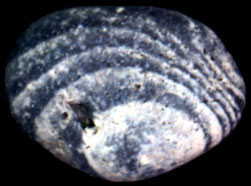I don’t really believe in anything, but am open to the cultural influences and historical origins of the following, their use of pattern and their observation of natural things. These are therapeutic antidotes to disorder:
- Ancient Chinese philosophy
- particularly the Taoism of the Tao Te Ching and the Book of Changes (I Ching) with its phenomenally beautiful binary construction (which inspired Leibniz); and the use of symbolic number patterns, like the cultural use of the order 3 magic square of the Pa Kua.
- Theosophy
- the original “new age” movement of the 19th century—a mixture of deep insight and the occasional misappropriation of then-current science as an attempted to combine science and philosophy with eastern and western religions. It influenced Hilma af Klint, Scriabin, Kandinsky and others; and is often plundered and trivialised by current New Age populism.
- Esoteric Astrology
- in a theosophically-inspired form that emphasises patterns, occult cosmology, symbolism, psychology and recent statistical research, and as a symbolic map to aid the journey through human complexity.
- Ritual magic
- in the past the colours, forms and precisely detailed correspondences of symbolic magic—built up over centuries from a wide cultural spread—have had fascinating permutations and uses for me. Now mostly internalized as one of the markers on the way.
It is a truism that the only constant is change and that surfing it is the best approach to survival. Over the years, this has evolved into a kind of living practice, much of which is informed by Taoist philosophy. Any spiritual or experimental (rather than rational) ideas I hold are a combination of experience and a rolling series of working hypotheses about unusual states of being, maintained in a state of rational vigilance and healthy skepticism. For instance, I simultaneously view out-of-body experiences as psychic phenomena, while also considering that they may be driven by extreme depersonalisation.
